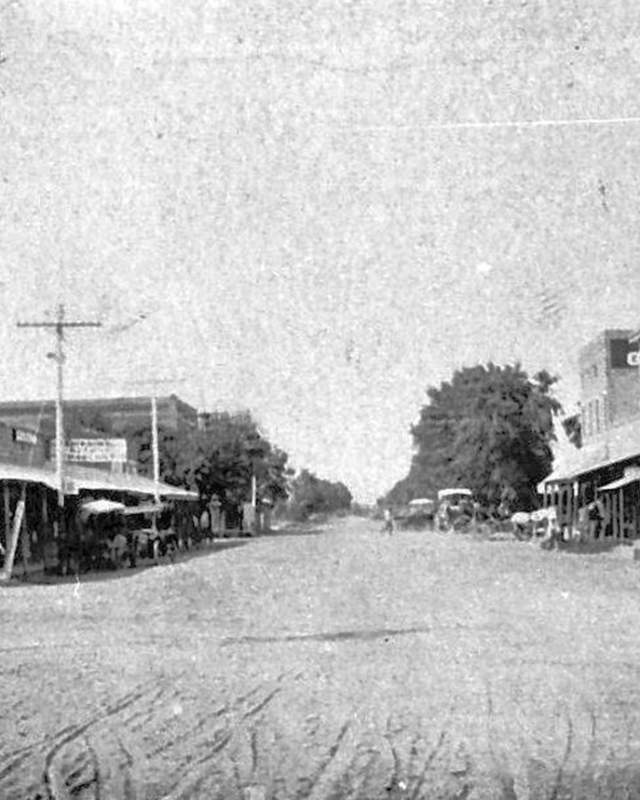History
First settled in 1892, Glendale attracted farming families with its fertile land, canal-fed water supply, and no alcohol policy. Land developers, led by William J. Murphy, guided the growth of the farming town. With the establishment of a railroad link to Phoenix in 1895, Glendale blossomed into the largest town in the northwest Salt River Valley. Local farms cultivated everything from sugar beets to cotton. Glendale incorporated as a town in 1910. Separated from Phoenix by miles of open space, Glendale developed its own downtown with banks, groceries, theaters, department stores, businesses, and surrounding neighborhoods. Some of Glendale’s past remains visible in the historic buildings throughout town.
Two of Glendale’s historic crown jewels are one of the Valley’s oldest and most magnificent ranches, Sahuaro Ranch Park Historic Area consists of 13 original buildings and a huge rose garden. Palm trees wave above the red brick facade of the Main House, and peacocks now roam the grounds where chickens and livestock used to graze. Known as the “Showplace of the Valley,” Sahuaro Ranch Park Historic Area offers exhibits and guided tours, keeping alive the history of early settlement in the Valley.
Historic Manistee Ranch also beckons visitors to explore the well-preserved ranch house beneath the canopy of swaying palm trees. It remained one of the last working cattle ranches in the Valley. The house has been preserved for future generations to see, as tours are also available.
Timeline
1884 — Hispanic settlers are the first residents of the Glendale area
1886 — Arizona Canal completed; William Bartlett started a 640-acre fruit farm now known as Sahuaro Ranch.
1888 — Grand Avenue constructed
February 27, 1892 — Glendale Temperance Colony officially founded when W.J. Murphy’s New England Land Company, along with Burgess Hasdell completes a survey and plat of Glendale’s first residential area. This date is celebrated as Glendale’s official birthday.
1895 — Santa Fe Railroad Depot established along Grand Avenue; first elementary school, the Glendale Grammar School, was built; first library was built on what is now Murphy Park with the help of Victor E. Messinger and 400 books from his own collection.
1909 — Louis M. Sands arrives to establish Manistee Ranch.
1909 — Downtown park donated by Murphy; first telephones installed.
June 18, 1910 — Town of Glendale incorporated; First Mayor is A.W. Bennet and the first Town Clerk is Victor E. Messinger.
1912 — Glendale News founded by Fred C. Woodward: Glendale High School built at a cost of $20,000
1926 — a second newspaper, The Glendale Herald, was established
1927 — Chamber of Commerce founded
1930 — Glendale becomes one of the nation’s top produce shippers; Town of Glendale becomes City of Glendale
1938 — Library built in Murphy Park
1941 — Desert land cleared for Air School site. Thunderbird Airfield created for training pilots for Army Air Corps in World War II. Construction of Luke Air Force Base also begins.
1946 — Thunderbird field transformed into Thunderbird School of International Management.
1948 — Glendale becomes only city in Arizona with 100% of its streets paved.
1951 — Luke Field permanently reactivated as Luke Air Force Base
1965 — Glendale Community College opens
1977 — Glendale Star founded
1981 — Sperry (now Honeywell) builds Glendale’s first aerospace facility
1986 — New Glendale Municipal Airport opens
1988 — ASU West opens
1989 — Cerreta Candy moves into downtown
1990 — Catlin Court Historic Shops District created in downtown Glendale.
1993 — Arrowhead Towne Center mall opens
1994 — Glendale Glitters holiday light display begins
1995 — Luke Air Force Base annexed
1996 —Glitter & Glow, Chocolate Affaire events begin; Midwestern University dedicates first campus building
1998 — Downtown Glendale named one of top 10 antique centers in U.S. by U.S.A. Today
1999 — Glendale Civic Center opens and is site of millennium celebration
2000 — Glendale Visitor Center opens in Historic Downtown Glendale. The Visitor Center is an official state of Arizona local information center.
2003 — Glendale Arena, a state-of-the-art, multi-purpose facility opens at Westgate City Center sports and retail megacomplex
2005 — Business Week Magazine names University of Phoenix Stadium
“A Top 10 Sporting Venue in the World” before it even opens
2006 — University of Phoenix Stadium opens; Glendale Arena naming rights sold to Jobing.com to become Jobing.com Arena
2007 — University of Phoenix Stadium becomes the new venue to host the Tostitos Fiesta Bowl and hosts the BCS National Championship Game for the first time and will do so every 4 years
2008 — Glendale hosts the XLII Super Bowl
2009 — Spring Training facility for L.A. Dodgers & Chicago White Sox opens
2014 — Arena naming rights sold to Gila River to become Gila River Arena
2015 — Glendale hosts the XLIX Super Bowl; the most watched Super Bowl in history
